This is a list of the different ways you can expose images in the camera. All of them work.
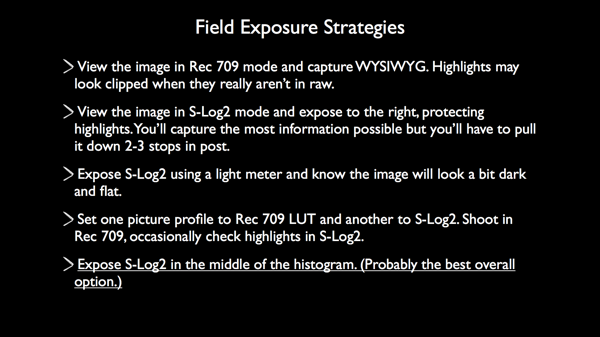
Exposing while viewing Rec 709 mode gives you an image that looks great at the time but hides highlight detail, making it appear clipped.
Exposing while viewing S-Log2 and pushing the histogram to the right gives you the most information but requires the most correction.
Exposing S-Log2 with a meter works perfectly well but will result in a dark, flat image until it is graded.
You can operate the shot while looking at Rec 709 but set exposure viewing S-Log2.
What worked best for me was exposing S-Log2 in the center of the histogram. I captured a lot of information and the image still looked reasonably good on the LCD display.
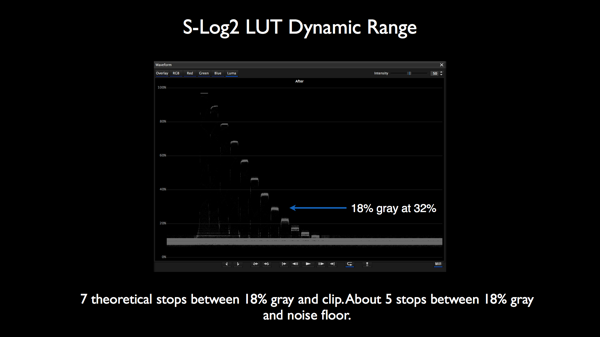
Getting back to our old friend the Xyla chart we can now see how much dynamic range we can actually capture with the FS700.
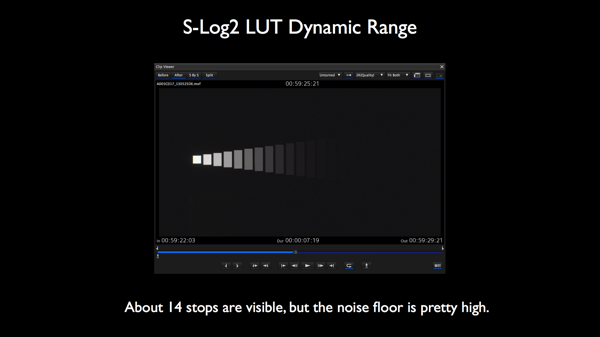
Noise severely limits the dynamic range of a camera. The more noise there is the more you have to crush it down to eliminate it, which means less dynamic range overall as well as less light sensitivity (lower ISO).
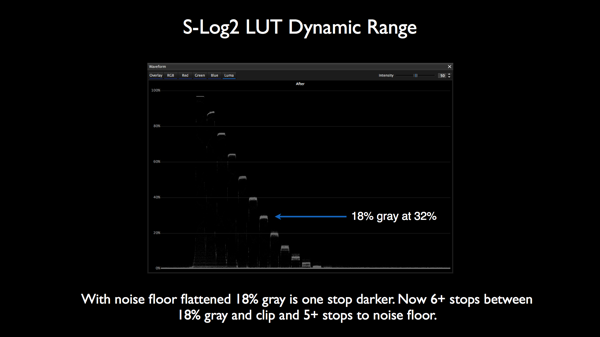
Pulling the gamma curve down a stop in the grade reduces shadow noise considerably, but the camera is now technically one stop slower in ISO rating.
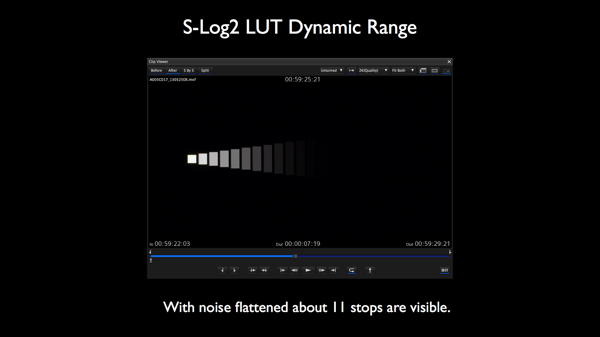
It’s always a good idea to double check the actual image and see if it matches the waveform monitor. In this case it does.
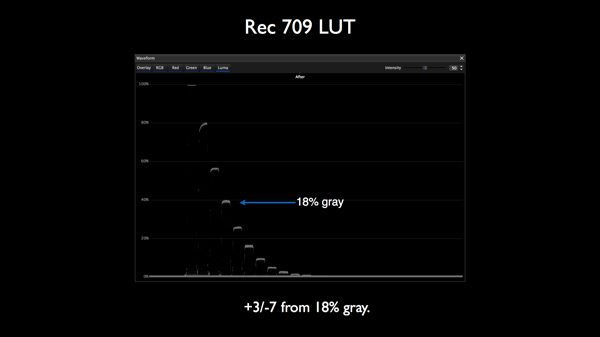
The Rec 709 LUT eliminates about one stop of dynamic range from what we’ve seen above, and significantly reduces overexposure headroom. If we take this same image and view it in S-Log2, however…
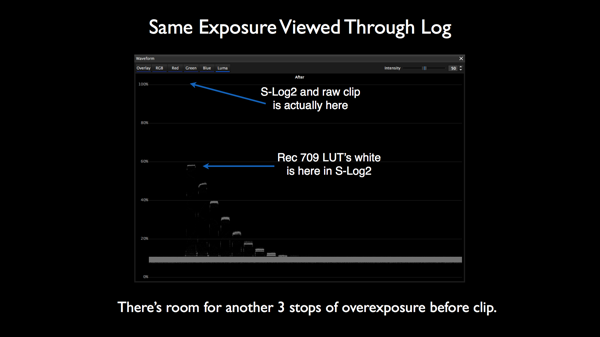
…S-Log2 gives us considerably more overexposure headroom for that “filmic” look.
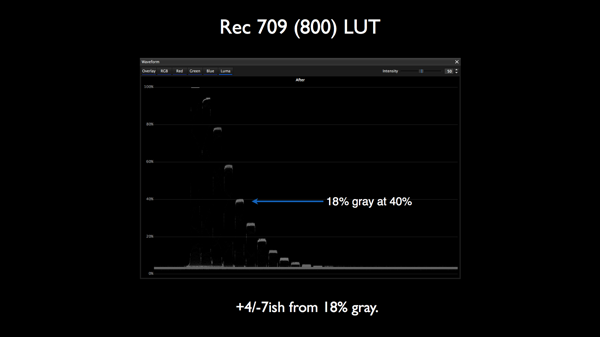
The Rec 709 (800%) LUT is designed to present a pleasantly contrasty image on a Rec 709 display while preserving another stop of overexposure headroom. According to this graphic it does’t look like it actually captures up to 800% reflectance, the way Sony labeled it, but it’s certainly better than regular Rec 709 itself.
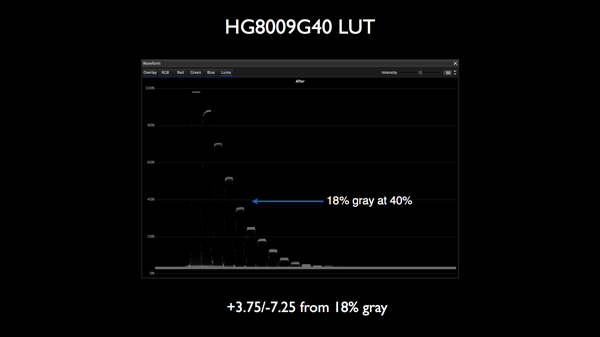
This hypergamma curve claims to capture up to 800% reflectance, and uses the full 0-109% offered by the Rec 709 spec. (Broadcast signals are clipped at 100%, so that extra 109% makes room for additional highlight detail that can be captured and pulled down later in a broadcast grade.)
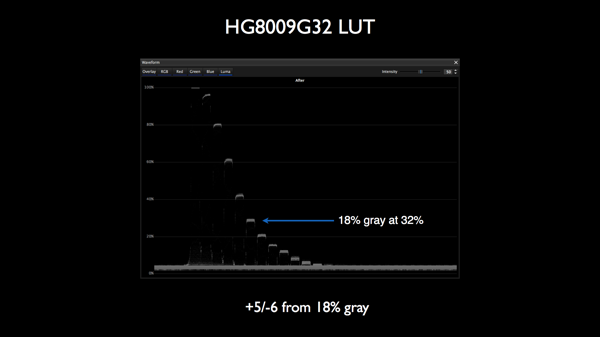
This hyper gamma curve places middle gray at 32%, allocating another stop of dynamic range to the highlights. In theory a colorist will pull middle gray up from 32% to 40% in post, but in reality…
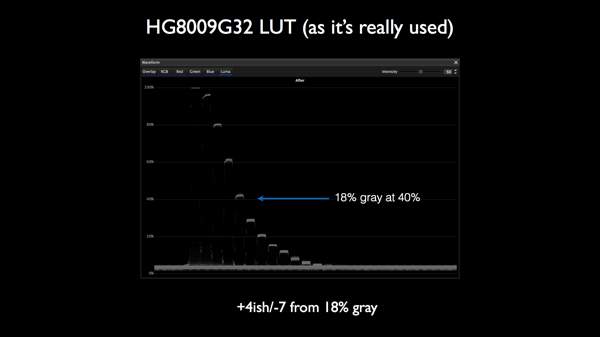
…we typically use it as a what-you-see-is-what-you-get curve, so we only get a little more overexposure headroom out of it beyond what we see in HG8009G40.
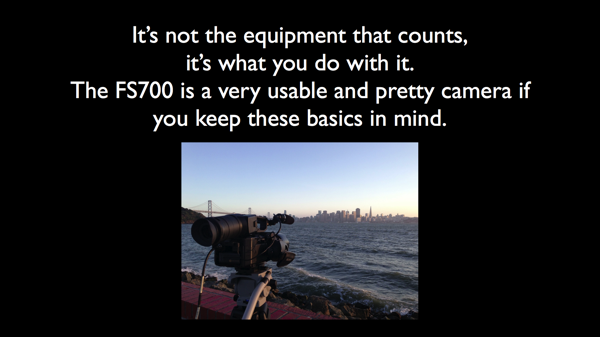
The bottom line is that you can make pretty pictures with almost anything. All it requires is some talent, experience, and knowing your tools. Some of the greatest films in history were shot on cameras that horrify us now. The key factor in getting pretty pictures out of a limited piece of equipment is… you.
Disclosure: I was paid to co-produce and present this material at CineGear 2013 by Sony Corporation. I also work as a paid consultant to DSC Labs, who provide me with charts to use in my tests (like the Xyla). I designed the OneShot dailies chart.
About the Author

Director of photography Art Adams knew he wanted to look through cameras for a living at the age of 12. After spending his teenage years shooting short films on 8mm film he ventured to Los Angeles where he earned a degree in film production and then worked on feature films, TV series, commercials and music videos as a camera assistant, operator, and DP.
Art now lives in his native San Francisco Bay Area where he shoots commercials, visual effects, virals, web banners, mobile, interactive and special venue projects. He is a regular consultant to, and trainer for, DSC Labs, and has periodically consulted for Sony, Arri, Element Labs, PRG, Aastro and Cineo Lighting. His writing has appeared in HD Video Pro, American Cinematographer, Australian Cinematographer, Camera Operator Magazine and ProVideo Coalition. He is a current member of SMPTE and the International Cinematographers Guild, and a past active member of the SOC.
Art Adams
Director of Photography
www.artadamsdp.com
Twitter: @artadams
